Verdict
The RingConn Smart Ring is an elegant smart ring that manages to offer the level of tracking you’d expect to get from most wrist-worn fitness trackers. It’s got better battery life than the competition with an app that’s free to access with more features to come. If the app can be polished up a little it will feel like a much better alternative to other standout smart rings, namely the Oura Ring.
Pros
- Good battery life
- Sleek look that hasn’t scratched
- Good sleep and heart rate tracking
Cons
- Lacking some more useful actionable insights
- App feels a bit cluttered
- Current lack of exercise tracking
-
Tracks heart rate, blood oxygen and skin temperatureCan track incredibly useful metrics from your finger. -
Daily activity tracking and sleep monitoringProvides details on how well you sleapt, as well as your general activity. -
7-day battery lifeOnly needs to be recharged once a week.
Introduction
The RingConn Smart Ring, as the name quite clearly states, is a smart ring that wants to track your health day and night in a discreet fashion.
The Oura Ring 3 rival packs in sensors to track heart rate, temperature, sleep, daily step counts and more. Unlike Oura, the RingConn doesn’t require a subscription to access everything it has to offer. It’s also promising up to 7 days battery life, which on paper means it can last longer than other smart rings by some distance.
While the number of smart rings is starting to creep up with the Samsung Galaxy Ring on the way, should you be grabbing the RingConn to track your health and wellness instead? Here’s my take.
Design and comfort
- Comes in three different colours
- Made from titanium
- IP68 waterproof rating
The RingConn Smart Ring comes in three colours; gold, silver or black and like other rings, requires a sizing kit to make sure you get the ideal fit. That kit covers nine ring sizes (US 6-14) and, like Oura, doesn’t do half sizes. Thankfully, having tested a few smart rings already, my typical size 8 worked a treat.
This is a ring you can wear on either hand, with RingConn suggesting you should wear it on your index, middle or ring finger to get the best tracking results. I wore the black version, which unlike other smart rings I’ve tested, has flatter edges on both the top and the bottom of the ring interior, which does help to ensure minimal movement from the ring.
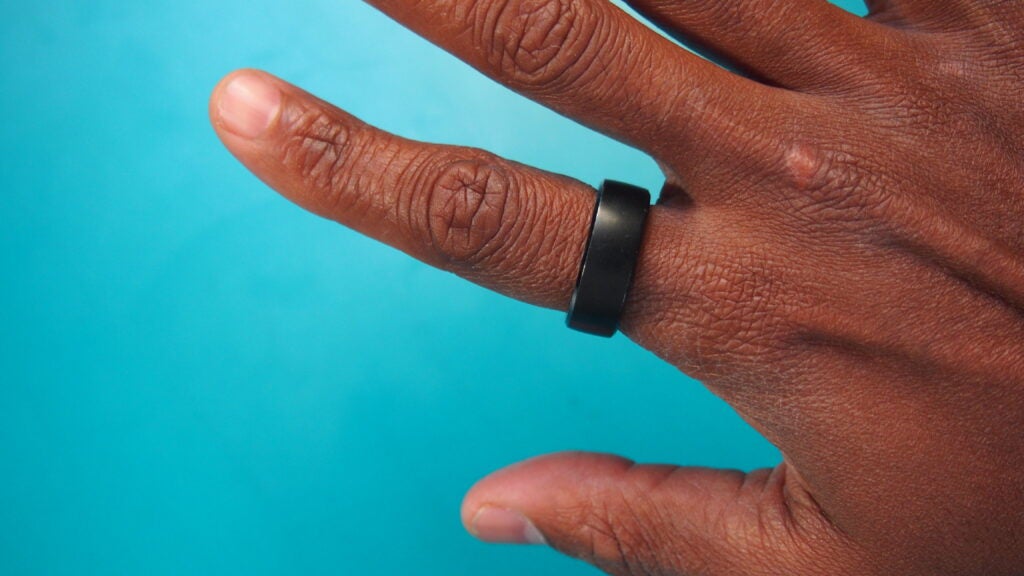
It’s made from titanium, which seems to be the go-to material for most smart rings and unlike the Oura, Ultrahuman and Circular Rings I’ve tested, the RingConn seems to be less susceptible to easily picking up scratches. It’s still worth remembering to take it off for scenarios like going to the gym to lift some weights. RingConn does offer an optional protector that costs $29 and sits on the exterior of the ring to offer extra defence against scratches.
Size-wise, the RingConn isn’t too far off the stature and thickness of the Oura, and that means you get a not too bulky form factor and it does just feel like you’re wearing a normal ring. The IP68 waterproof rating does mean you can submerge in water up to one metre depth for 30 minutes, so this is one you can keep on in the shower and the bath, and I’ve done both of those things with it.
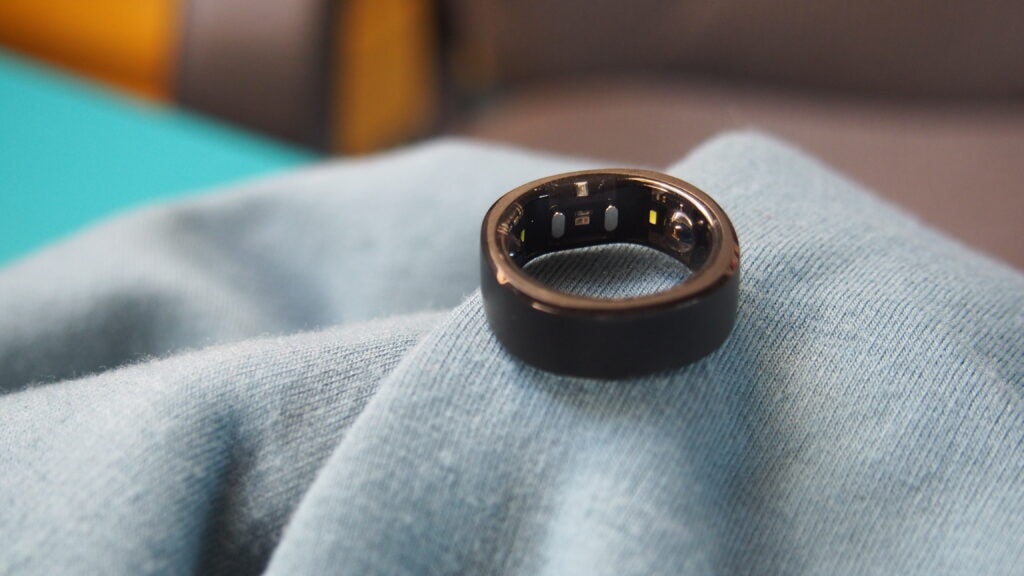
In the interior of the ring you’ll find the sensor array, which includes a PPG optical sensor, temperature sensor and accelerometer sensors to enable the activity tracking and sleep monitoring. Something I have noticed is that those sensors can shine quite bright, and the nature of the ring design means they can appear quite prominent at times. It’s never been an issue, but it’s definitely a sensor setup that is, at times, more noticeable than other smart rings.
When it’s time to charge, the ring sits inside of a charging case that uses USB-C charging and, while not as small as other smart ring charging setups, does certainly keep it more secure if you want to charge it on the move.
Fitness and health tracking
- Tracks sleep and naps
- Monitors heart rate and SpO2
- Workout mode to be added
In terms of what the RingConn is able to track, it’s ultimately trying to offer as much as what you’d expect to be able to track from wrist-worn fitness trackers. It will count your steps, monitor sleep and keep tabs on biometrics data like heart rate, skin temperature and blood oxygen. Though none of these features are designed for medical use, and are there instead to offer general wellness guidance and insight. While these metrics are continuously monitored, you can also take on the spot measurements of your heart rate and blood oxygen when prompted from the app.
On the activity tracking front, you’ll see daily step goal totals, calorie burn, see how many hours you’ve managed to stand up for and there’s also an activity intensity ratio to help you see the parts of the day you were most active. It’ll also offer a summary of your step totals and tell you if you’re stepping more of less than the previous week. I’ve been wearing the RingConn alongside the Oura Ring Gen 3 and a Garmin watch. I found daily step totals were not far off the Garmin while there was a little more disparity in the numbers against the Oura.
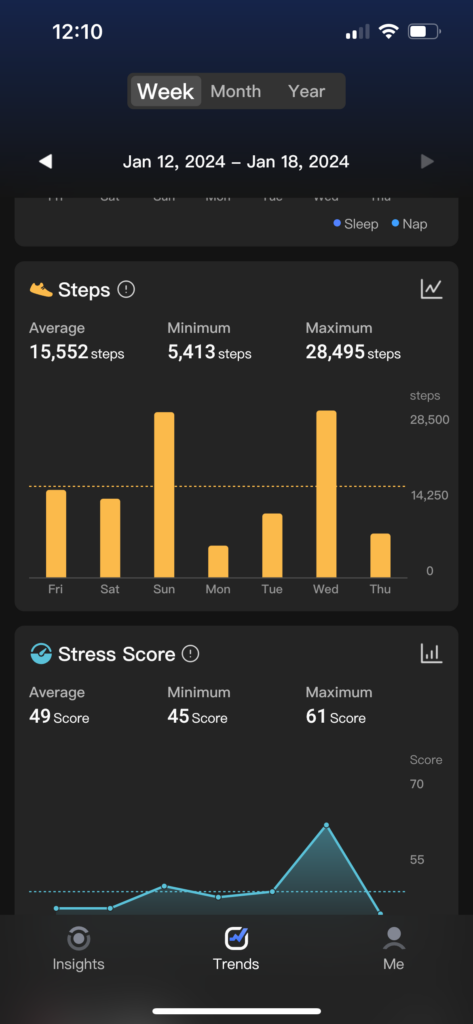
Sleep is the next big area and there’s an entire tab in the app dedicated to displaying those sleep stats. It’ll score sleep, show a breakdown of sleep stages and also capture heart rate, heart rate variability, SpO2, skin temperature and respiratory rate.
As mentioned, I’ve been wearing it alongside the Oura. In general, RingConn’s sleep quality scores were similar to Oura’s. In terms of time slept, there was typically a difference of around twenty minutes and sleep stage breakdowns were similar too. Metrics like heart rate were similar, while there were some differences in the average heart rate variability readings. Overall though the core sleep tracking seemed solid.
Last up is stress, which is tied to those heart rate variability measurements. You’ll get daily scores of your stress, an all-day stress index, stress ratio breakdown and see a useful stress reading before sleep and during sleep. The latter feels like one of the useful insights you don’t necessarily find pumped out by other smart rings. I’ve also been tracking stress on a Garmin watch to compare and found that while medium and highly stressful periods largely matched up, overall scores rarely matched.
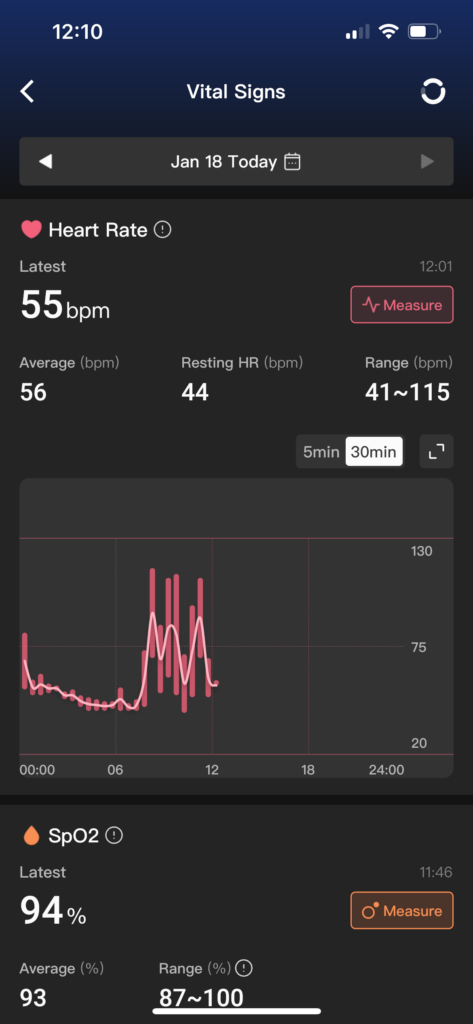
RingConn also includes a Wellness Balance widget, which is currently in beta and aims to tell you if you’ve dedicated enough time to sleep, managing stress, staying active and how that impacts on vital signs. It’ll then provide insights on how well balanced those elements are, offering suggestions if you’re in a good condition to exercise and areas to improve like hitting sleep goals or adjusting the time you go to sleep.
There are more features on the way. A workout mode is set to be added alongside menstrual cycle predictions, mindful breathing and meditation modes and more comprehensive sleep reports.
App
- Available for Android and iOS
- Free to use all aspects
The RingConn Smart Ring app is available to download for free. Right now, there are no features that require additional payment to access and it looks like for now that’s how things will remain. While syncing data to the app regularly is something you need to get acquainted with doing, it is a ring that’s also capable of storing data for seven days if for some reason you can’t sync it straight away.
As far as what that app is like to delve into, I’d say it’s a bit on the busy side. The main summary screen packs in a lot of data, and when you skip from sleep, activity and stress sections, these pages are packed with data, graphs and more. When you’re putting a big emphasis on spending time in the app to check your progress, it feels like the RingConn one could benefit from being a bit cleaner in general.
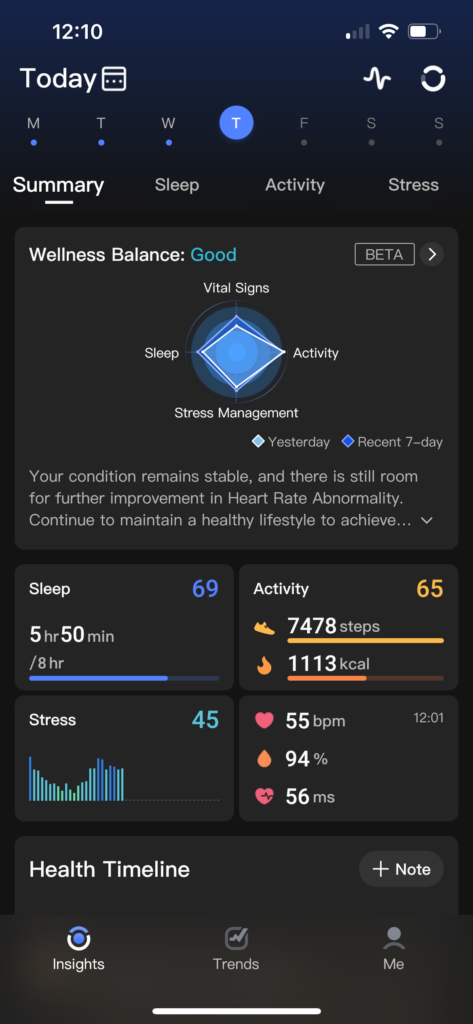
On top of the sections mentioned, there is also a Trends screen that combines stats across the week, month and year. Again, it feels a bit overwhelming to take it all in. The ring settings menu is at least a little less cluttered and makes tinkering with things like units of measurement, adjusting step goals or sleep schedules a relatively straightforward thing to do.
With rings like RingConn a little limited on the exercise tracking front, it does feel like a bigger reliance on other apps to fill in those gaps. It does work with both Apple Health and Google Fit to combine your stats and that third-party app integration feels like an important aspect to build on going forward.
Battery life
- Up to 7 days battery life
- Uses portable charging case
The Ringconn Smart Ring promises and delivers the best battery life I’ve experienced on a smart ring. It’s not been quite as long as stated, but it’s been comfortably stronger than what Oura, Ultrahuman and the Circular Ring can offer in full tracking mode.
Ringconn says the ring should last for up to 7 days. In my testing I’ve found it’s generally been more like five days, which is still more than what you’ll get from rival rings. Overnight battery drop off was typically 1-2%, which is impressive when you consider how much is being tracked overnight.
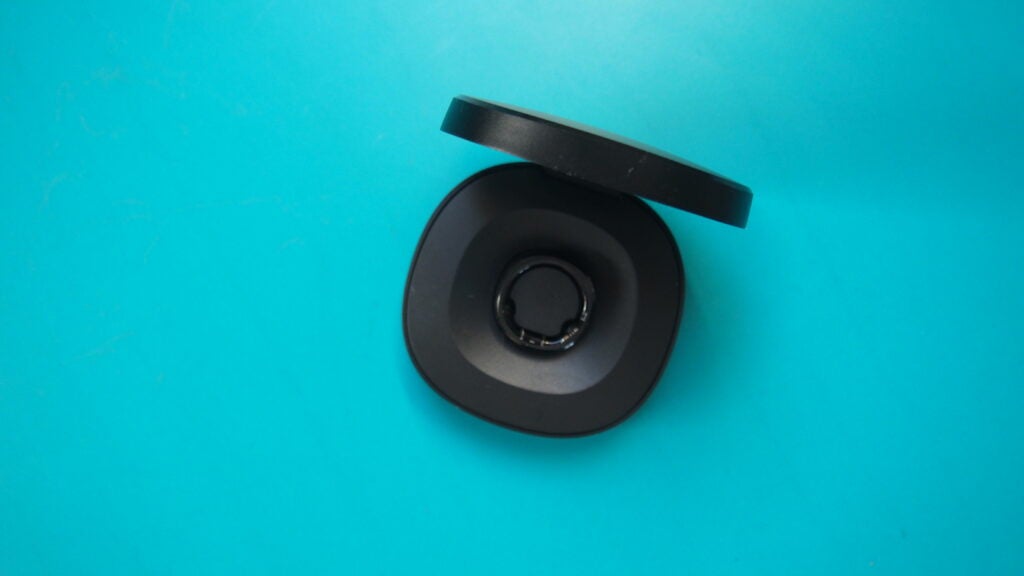
When you do need to charge it, the ring powers up in about an hour and will fire a notification to your phone to let you know that. What’s nice is that the app will display the battery status in a percentage and also give you an estimate on the number of days it should last too.
Latest deals
Should you buy it?
If you want an attractive smart ring with strong core tracking
The RingConn Smart Ring looks great and, on the whole, offers good fitness tracking data.
You want the smart ring with the best app experience
There’s quite a lot going on in the RingConn app, which makes spending time in it overwhelming at times and could benefit from a less is more approach.
Final Thoughts
The RingConn Smart Ring is an elegant smart ring that manages to offer the level of tracking you’d expect to get from most wrist-worn fitness trackers.
It’s got better battery life than the competition, with an app that’s free to access with more features to come. If the app can be polished up a little it will feel like a much better alternative to other standout smart rings, namely the Oura Ring.
How we test
We thoroughly test every fitness tracker we review. We use industry standard testing to compare features properly and we use the watch as our main device over the review period. We’ll always tell you what we find and we never, ever, accept money to review a product.
Heart rate data compared against dedicated heart rate devices
FAQs
The RingConn has an IP68 certified waterproof rating, which means you can wear it while washing your hands, when showering and you can swim with it up to 50 metres depth.
It’s recommended that you wear the ring on your index, middle or ring finger with the sensors sitting against the inside of your finger. You should wear it on a finger on your non-dominant finger to ensure the most accurate activity tracking data.
























